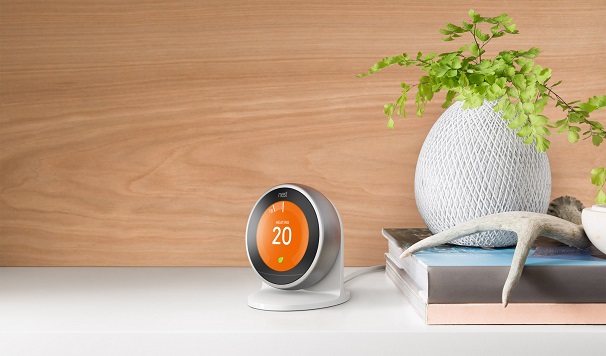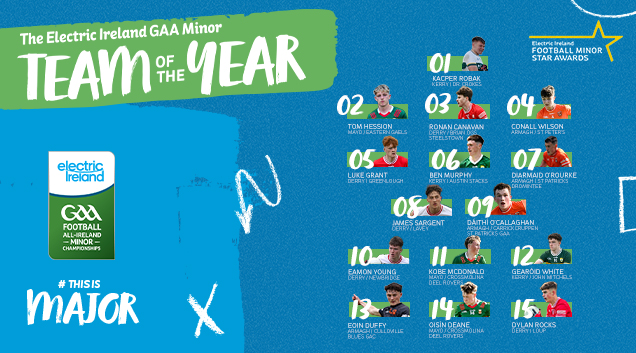
This product is not on sale right now.
Heating isn't necessarily the first thing you think of when you think of a smart home. With smart TVs becoming increasingly common and smart speakers with built-in voice assistants as the latest gadget for amateur techies; smart thermostats don't always get the same attention. But they might be the easiest piece of smart home technology to bring into your home, and something that will genuinely make your life easier.
I've had a smart thermostat in my house for 2 years and I'd like to share some of the ways it's made my life easier. The headline with smart thermostats is that they give you greater control over your heating and ensure your house is always warm when you need it to be; but, in my experience, these devices offer much more than that.
It works around you
When I first got my Nest Learning Thermostat, I was told I needed to teach it so it can create a schedule for me based on when I’m at home and the temperatures I like. I’ll be honest, this wasn’t for me. I felt like I had just got a new puppy that I needed to look after and house train. Plenty of our Nest customers have used this and it works just as it should but for me – I just don’t have any patience.
The installer suggested I set a basic schedule and then enable Nest Sense – the brains of the thermostat that continuously learns your preferences and adapts the schedule to suit you.
This worked a treat, using the app I set it to be warm in the morning before work and in the evening when we get home until we go to bed. Now, without even doing anything, the magic happens. Each time I manually adjust the thermostat or increase temperature using the app, it begins to learn and adapt. This might sound complicated but, in reality, it just happens. Now I rarely have to use the app to adjust the temperature, the Nest just knows when to turn on the heating.
It saves you money…
While a smart thermostat won't cause a sudden drop in your heating bills, it will help you to avoid heating an empty house or leaving the heat on for too long. If you're using your heating less often, you will see a saving.
A study by The Behavioural Insights Team in the UK compared homes with Nest Thermostat to homes with a Digital Programmer (the white box with lots of buttons on it) and TRVs (the adjustable controls on side of radiators). The savings calculated from this robust study was a reduction of 10.5% to 11.5% in gas consumption used on heating. Based on current gas rates (12/9/18) the savings are €61 to €68 every year. If you have old fashioned heating controls in your home such as the time clock with pins, the annual savings are potentially much greater.
And proves it
The great thing about these devices is they don't just claim to manage your boiler effectively, they show you what they're doing. The Nest app shows you how long your boiler has been running each day over a 10 day period and highlights when the thermostat helped to save you energy or if the weather outside caused more or less boiler running time. Each time I look at it, it’s just a small pat on the back to remind me that this is helping me to save energy.
I’ve spoken to plenty of people who would argue that the energy savings are possible by micro managing using any heating control but, do you really want to? I don’t and I’m glad Nest does it for me without sacrificing comfort.
It's more than a thermostat
One of my favourite features of the 3rd Generation Nest Thermostat is called Farsight. The thermostat screen wakes up when it senses motion in the room (up to 5m from thermostat) and it displays useful information in large format on the screen. Options include digital or analogue clock or the local weather forecast.
As you walk closer to the screen, it adapts to show you more detail such as the hourly local forecast. It's one of those little features that don't change your life but you do notice it every day and it definitely gives the feel of living in a truly 'smart' home.
It's family ready
One thing I never realised before we had children is how important the temperature of your home is with a new born baby in the house. Going online to research baby safety tips should come with its own health warning; but after reading of the dangers of your baby being too hot or too cold, I’m happy that my Nest Thermostat has my back. With my old heating control it would either get too cold during the night or if I scheduled heat to come on at 5am, it would get too hot which is not good for babies. Nest regulates the heat so it stays in the comfortable (and more importantly safe) temperature range.This all depends on how well your home is insulated but, for me, it works a treat. The Nest also learns how quickly it takes your home to heat up and cool down based on weather forecast and makes the necessary adjustments based on your individual home.
If you have slightly older kids in the house, you probably look at the Nest and imagine the fun your kids would have with something that glows red when you turn it. Yes, they will do it all the time. Thankfully, you can set either a passcode to use the thermostat itself or set minimum and maximum temperatures so that they don’t have it constantly set to 30 degrees.
One thing kids do love is the Nest leaf, it appears on the screen when you lower the temperature to an energy efficient setting. It’s a simple thing but useful to teach children how small steps like turning down the heat by one degree can help reduce energy usage.
The idea of a ‘smart home’ used to be confined to tech enthusiasts and science fiction but, as this technology becomes more accessible, more and more of our homes are getting smarter. If you’re considering adding some clever technology to your home, make sure you don’t get so distracted by talking speakers or built-in Netflix that you forget about smart thermostats. They may not be the first smart device on your list but they will help you to heat your home more efficiently, and make your life a little easier along the way.
This product is not on sale right now.Written by
Odran Casey
Product Manager - Smart Home
Odran is a lover of technology, but only when it’s useful. As Product Manager for Smart Home, his job is to bring helpful home technology to Electric Ireland customers. When not at work, you’ll find him at home with his wife, baby boy, and a mountain of tech.



